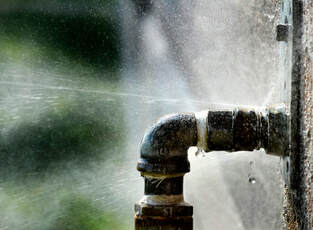Six Effective Techniques for Finding Unseen Water Line Leaks
Six Effective Techniques for Finding Unseen Water Line Leaks
Blog Article
What are your opinions on Detecting hidden plumbing leaks?

Early discovery of leaking water lines can mitigate a possible calamity. Some small water leakages might not be visible.
1. Check Out the Water Meter
Every home has a water meter. Checking it is a proven way that aids you discover leakages. For starters, shut off all the water sources. Make sure no one will purge, use the faucet, shower, run the cleaning device or dishwasher. From there, go to the meter and watch if it will certainly alter. Since nobody is using it, there must be no movements. If it relocates, that shows a fast-moving leak. Likewise, if you discover no changes, wait a hr or two as well as examine back again. This means you may have a sluggish leakage that can also be below ground.
2. Inspect Water Usage
If you detect unexpected changes, in spite of your intake being the very same, it means that you have leakages in your plumbing system. An unexpected spike in your costs suggests a fast-moving leakage.
A consistent boost every month, also with the exact same routines, reveals you have a slow leak that's likewise gradually rising. Call a plumber to extensively examine your residential property, specifically if you really feel a cozy location on your flooring with piping below.
3. Do a Food Coloring Examination
When it comes to water consumption, 30% comes from toilets. If the color somehow infiltrates your dish during that time without flushing, there's a leakage in between the container as well as dish.
4. Asses Outside Lines
Do not fail to remember to examine your outdoor water lines as well. Should water leak out of the connection, you have a loosened rubber gasket. One small leak can waste loads of water and increase your water expense.
5. Inspect and also Examine the Circumstance
House owners need to make it a practice to inspect under the sink counters and also inside cupboards for any bad odor or mold growth. These 2 red flags show a leakage so punctual focus is needed. Doing regular inspections, even bi-annually, can save you from a major issue.
Extra importantly, if you know your residence is currently old, maintain a watchful eye on your heating systems, pipes, pipes etc. Check for discolorations and also weakening as the majority of pipes and also appliances have a life span. They will likewise normally weaken as a result of wear and tear. If you think dripping water lines in your plumbing system, do not wait for it to intensify. Call a professional plumber today so you do not end up with an awful mess in your home.
Early discovery of dripping water lines can alleviate a prospective catastrophe. Some tiny water leakages might not be visible. Inspecting it is a proven way that aids you find leakages. One tiny leak can lose lots of water and also spike your water expense.
If you presume dripping water lines in your plumbing system, do not wait for it to rise.
WARNING SIGNS OF WATER LEAKAGE BEHIND THE WALL
PERSISTENT MUSTY ODORS
As water slowly drips from a leaky pipe inside the wall, flooring and sheetrock stay damp and develop an odor similar to wet cardboard. It generates a musty smell that can help you find hidden leaks.
MOLD IN UNUSUAL AREAS
Mold usually grows in wet areas like kitchens, baths and laundry rooms. If you spot the stuff on walls or baseboards in other rooms of the house, it’s a good indicator of undetected water leaks.
STAINS THAT GROW
When mold thrives around a leaky pipe, it sometimes takes hold on the inside surface of the affected wall. A growing stain on otherwise clean sheetrock is often your sign of a hidden plumbing problem.
PEELING OR BUBBLING WALLPAPER / PAINT
This clue is easy to miss in rooms that don’t get much use. When you see wallpaper separating along seams or paint bubbling or flaking off the wall, blame sheetrock that stays wet because of an undetected leak.
BUCKLED CEILINGS AND STAINED FLOORS
If ceilings or floors in bathrooms, kitchens or laundry areas develop structural problems, don’t rule out constant damp inside the walls. Wet sheetrock can affect adjacent framing, flooring and ceilings.
https://www.servicemasterbyzaba.com/blog/how-to-detect-water-leakage-in-walls/

As a devoted person who reads on Finding hidden leaks, I thought sharing that excerpt was essential. Appreciated our blog entry? Please share it. Help other people find it. Thank you for taking the time to read it.
More Details Report this page